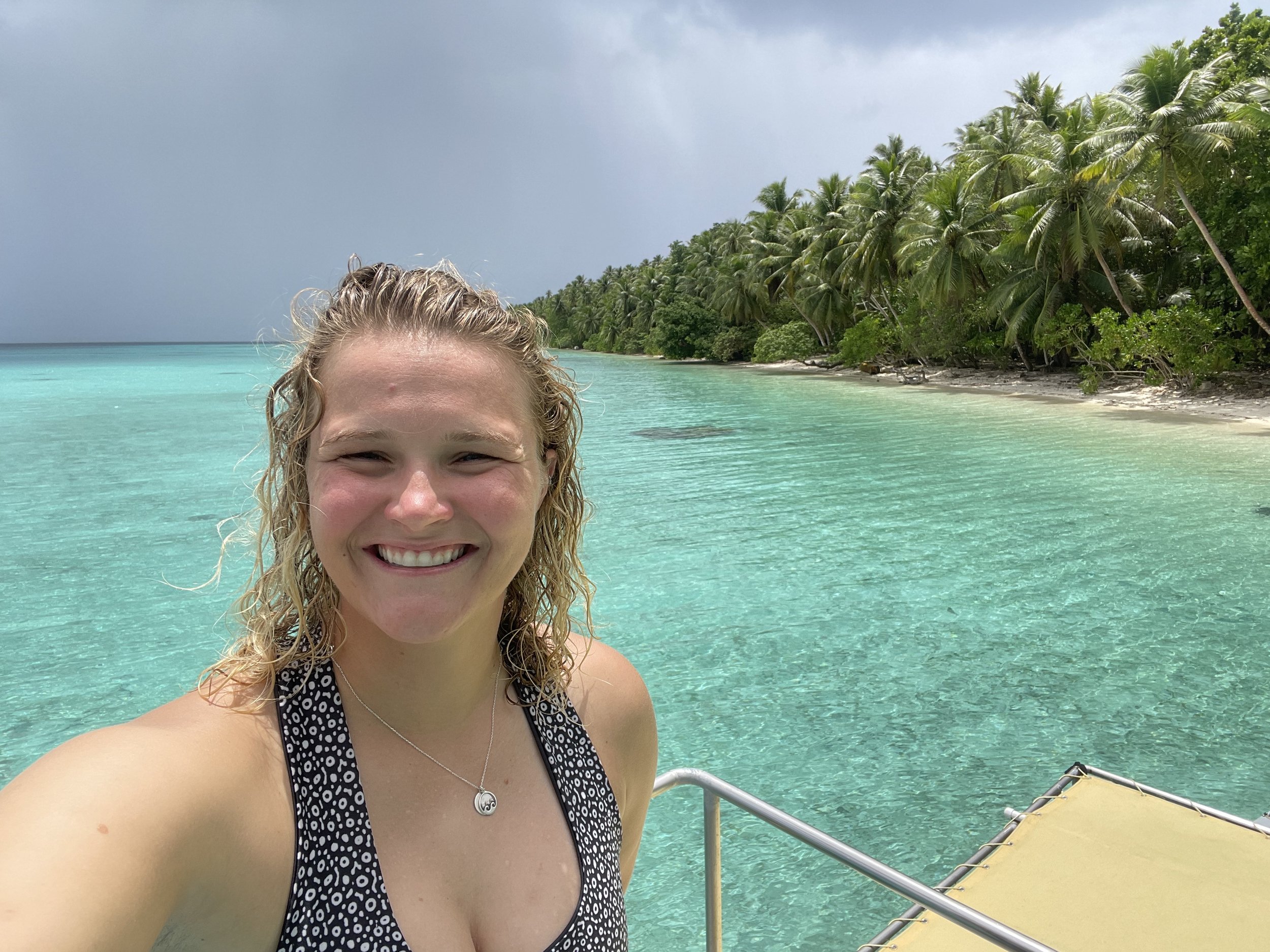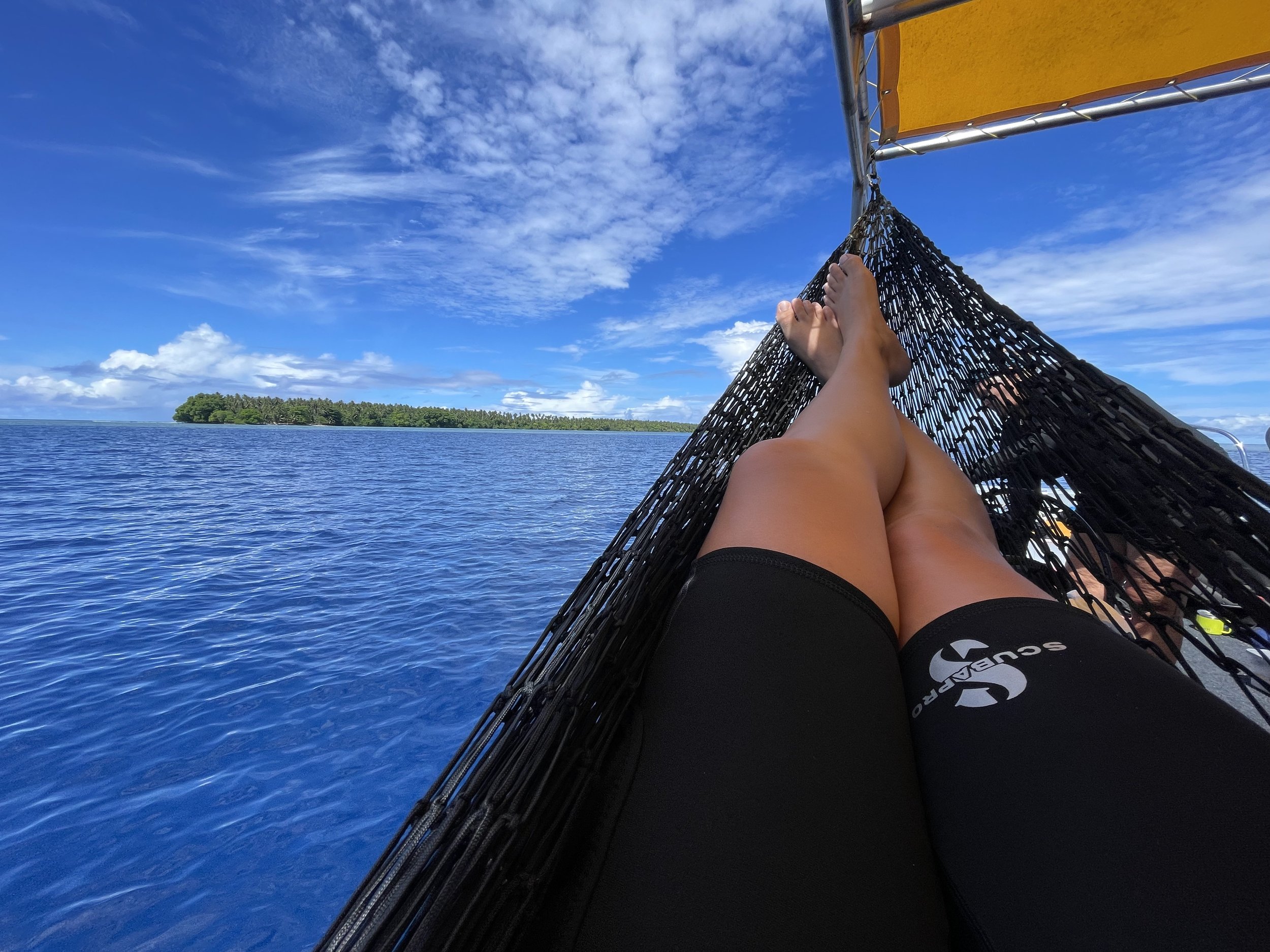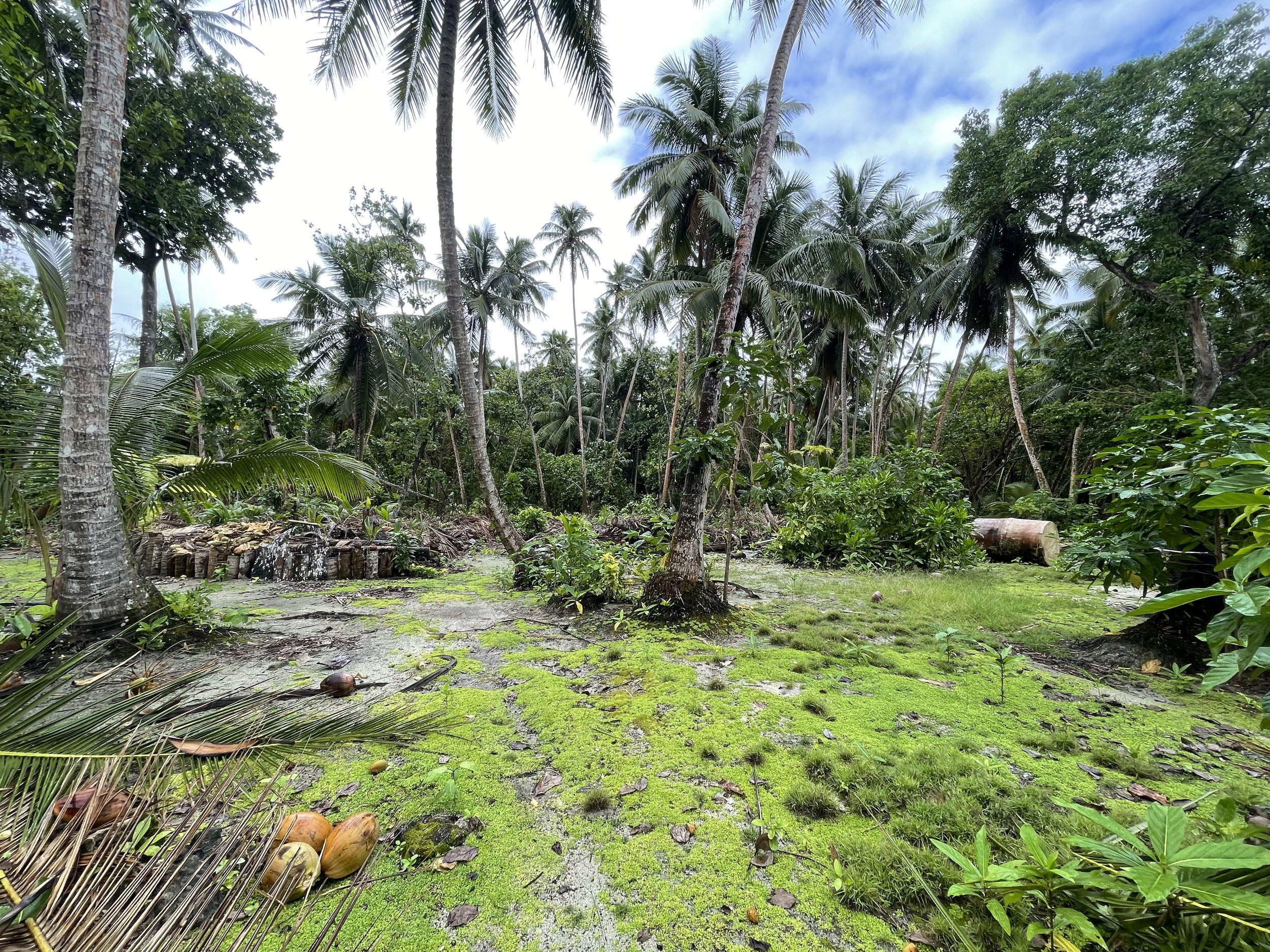While living in Guam, I have been fortunate to work with the Micronesian Conservation Coalition (MCC) as a member of the Marine Team. MCC’s mission is to respect and sustain the cultures and resources of the Micronesian islands and see the sustainable capacity of the islands through “a nexus of Indigenous cultures, empirical research, and community connections.” Working with MCC has been an incredibly rewarding and fulfilling experience.
Recently, I had the opportunity to travel with the MCC team to Pohnpei, a small island part of the Federated States of Micronesia, to study and document the manta ray population. Flying into Pohnpei was surreal. Atolls erupted from the ocean, seemingly appearing from nothing surrounded by the most beautiful gradient of blues.
We spent the week diving with the amazing crew at Pohnpei Surf and Dive Club. Averaging three dives a day, we dove at the main manta sites to document the population and behavior adding to the long-term data set MCC has been cultivating. One of the amazing things about Pohnpei is the presence of black morph mantas, something we do not have in Guam! The more common reef manta is gray on top with a white belly and gray/black markings. The black morph manta is all black with white markings. It is these markings that allow us to identify the mantas. The markings are like fingerprints in their uniqueness. As a part of our surveys, we photograph and video the manta’s bellies and later use the database to identify them. One of the unique features of the Manta Road dive site is the valley feature. In the middle of the site there is a large rock that serves as a cleaning station for the mantas. On one of our final days, we were able to witness the most remarkable feeding behavior. In the open blue water, the mantas were barrel rolling and forming feeding chains. It was an experience I will never forget. Truly magical. The mantas fall into a sort of trance while feeding and you almost have to actively move out of their way while they feed. The gentle giants fill my heart and soul and make me feel small in the expanse of the ocean.
However, the trip was not all work! Manta diving honestly doesn’t feel like work, but we had the good fortune to have some fun dives and experience the sheer natural beauty of Pohnpei. We spent a day diving and exploring Ant Atoll a UNESCO World Biosphere Preserve located 18.5 km southwest of Pohnpei. We first dove the entrance to the Atoll. Back rolling into the water watching the shallow reef close to the atoll drop off steeply forming a shear wall with an incredible reef and beautiful structure. Looking up at the corals and abundant fish silhouetted at the corner of the shallow was mesmerizing. Our second dive was on the outside of the atoll with the most pristine reef I have ever seen. It reminded me of a coral reef screensaver you would see at the dentist’s office – something so perfect I never thought possible. There are simply no words to describe the beauty, so I will let the videos and photos speak for themselves. Following our dives, we took in the beauty of the water and islands from hammocks on the dive boat. Soon we went ashore to have lunch and explore the atoll. Standing on the sandy beach, we watched black tip sharks cruise the shallows as we drank from fresh coconuts. On this side of the Atoll, the beach was lined with huts for families, however, during the middle of the week, we had it to ourselves. Paradise.














On our final dry day on Pohnpei, we drove south to explore Nan Madol, an ancient city made up of over 100 islets – the only city ever built atop a coral reef. It was a major political and spiritual hub from 1200 to 1700. The structure is truly incredible and leaves you staring in awe. To get to the site, you park in a village and walk through someone’s backyard to get to the trail where you walk for 10 minutes and rounding a corner, the amazing structure appears. Massive blocks of stones stacked to form an outer and inner wall with a small structure in the middle. We only explore a a small portion of Nan Madol, and it is astonishing to think how these blocks were moved to make such an impressive city. From inside the structure, you could hear the waves breaking just over the wall and beyond the mangroves. If we had more time, I would have liked to have spent the entire day exploring other parts of the city tucked away in the jungle and mangroves. A trip to Pohnpei would be incomplete without a visit to Nan Madol!

















It is difficult to describe the breathtaking beauty of Pohnpei and just how grateful I am to have the opportunity to travel and experience the brilliant natural beauty and vibrant cultures of the islands in Micronesia. My life will forevermore be enriched by the experience.













